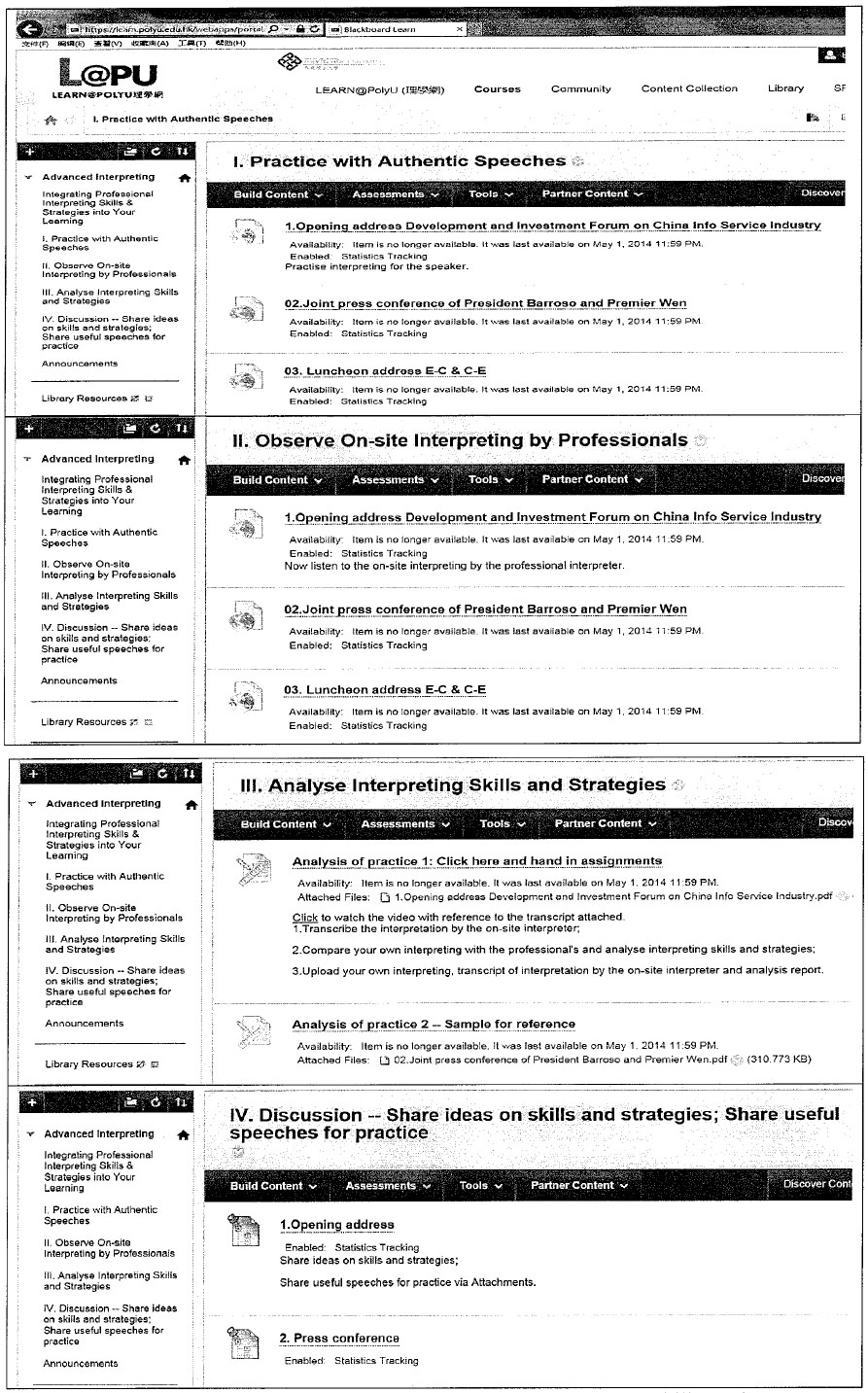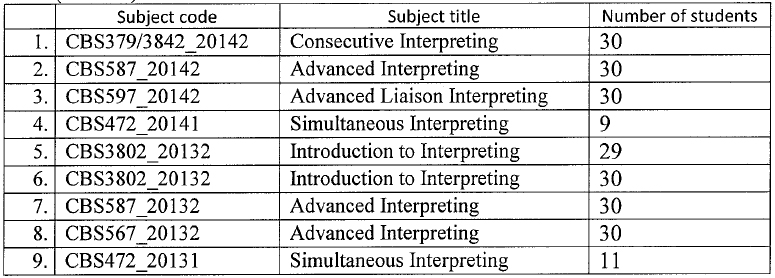
|
![]() : Integrating Professional Interpreters' Strategies into Interpreting Classrooms: Towards a Corpus-based Autonomous Learning Model
: Integrating Professional Interpreters' Strategies into Interpreting Classrooms: Towards a Corpus-based Autonomous Learning Model
Description
This e-learning platform was designed to intergrate the speech repository and the interpreting corpus into the Blackboard learning platform. It comprises the following four components of experietianl learning, which can guide students through the whole process of autonomous learning (see Figure 1):
Step I: Practice with authentic speeches.
Step II: Observe on-site interpreting done by professionial interpreters
Step III: Analyze interepreting skills and strategies.
Step IV: Share and discuss reflections on skills and strategies.

Figure 1: The e-learning platform for autonomous interpreting skill development
Step I involves students watching authentic live speeches, practising interpreting the same and recording their interpreting performance. The recordings of their intepretations were uploaded to the website, to be graded by the instructor. In Steps II and III, students were required to write analysis reports on interpreting skills and strategies that they had observed in the professional interpreters, while also reflecting on their own interpretations. In Step IV, students engaged in peer learning by sharing ideas on what they had learned.
Evaluatioin
The e-learning platform has been applied to students' out-of-class practice and autonomous learning in a number of interpreting subjects, including, "Introduction to Interpreting", "Consecutive Interpreting", "Simultaneous Interpreting", "Advanced Liaison Interpreting" and "Advanced Interpreting". A total of 230 students in nine subjects have engaged with the e-learning platform:

This platform has functioned as a very effective tool in managing and enchancing students' deliberate and focused practice. It served as an efficient complement to classroom teaching by increasing students' practice hours. Autonomous out-of-classroom practice increased by approximately 36 hours on average for students engaging with the e-learning platform. Since the introduction of the e-learning platform, more time became available for learning activities in the class.
The implementation of the e-learning platform also made it easier for the instructors to monitor students' practice and progress in their out-of-class learning. In the students' reflection reports, students generally agreed that the e-learning platform had motivated and assisted them in achieving intended learning outcomes in various subjects.
Disclaimer
The experiences reported in this section are collected from the project leaders. EDC is not liable for the accuracy of information and possible infringements of copyright associated with individual cases.